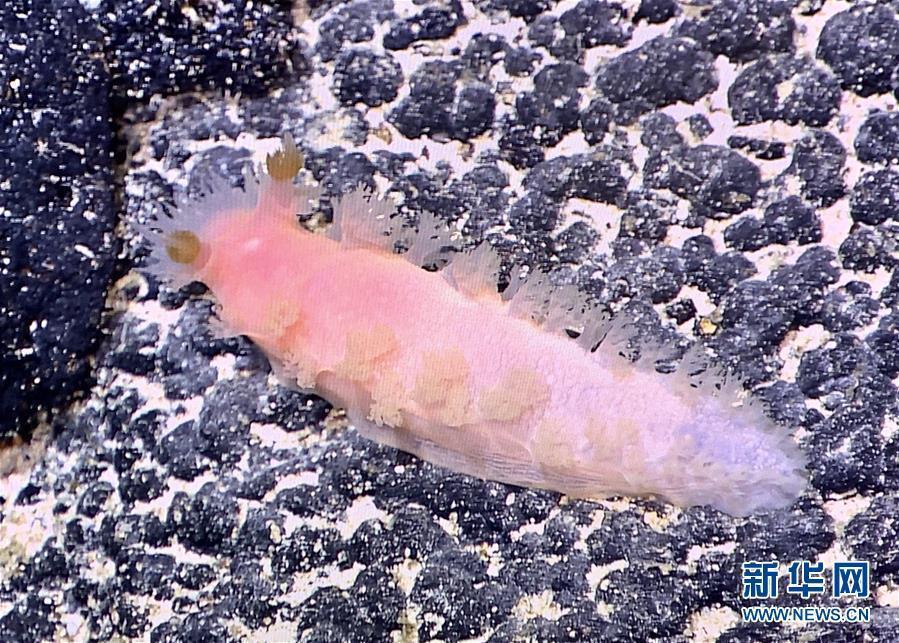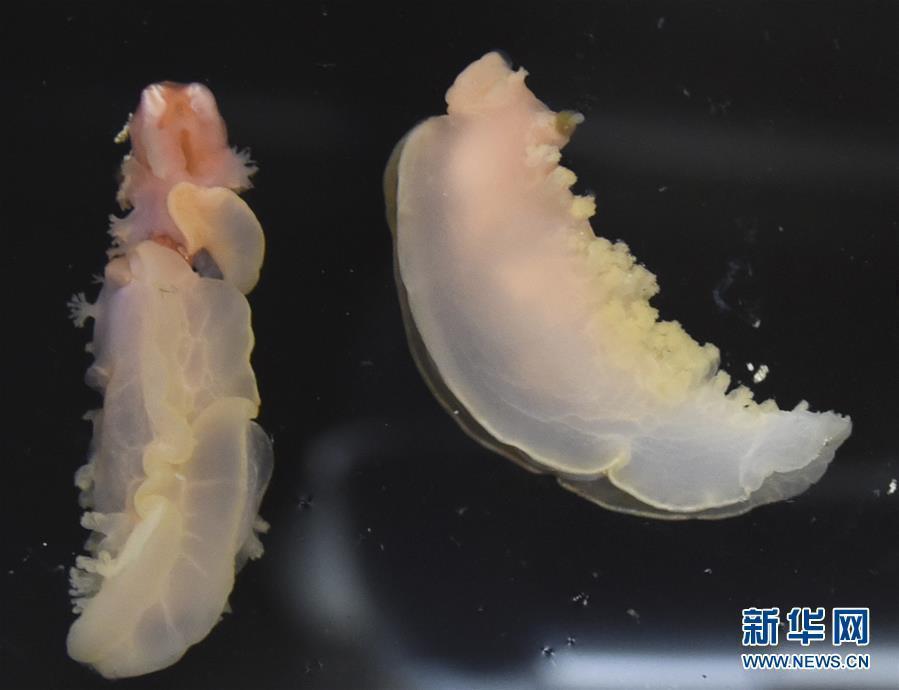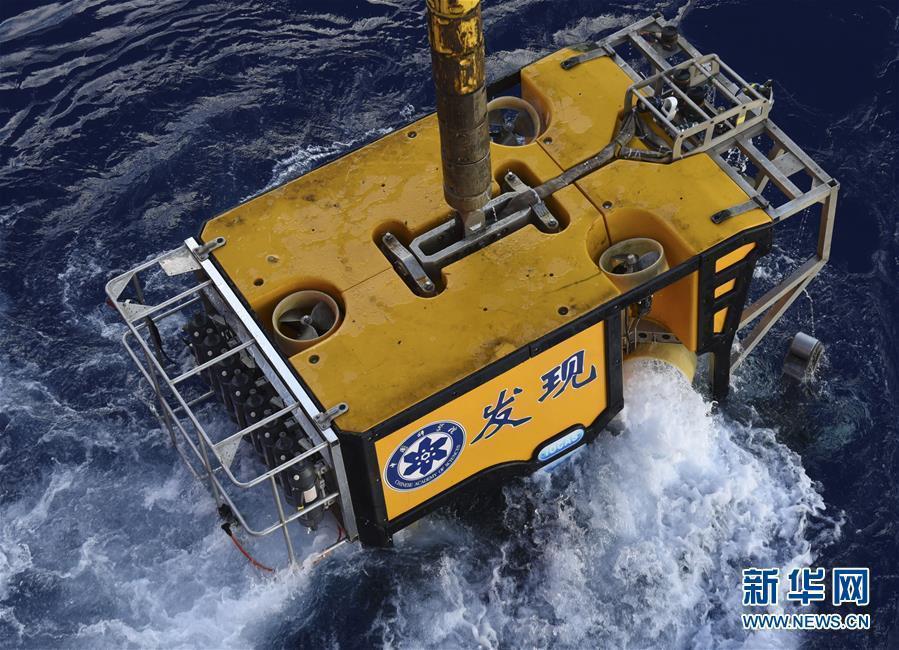
A marine organism found by unmanned remote sensing submersible Faxian (Discovery), which was released from the research vessel Kexue (Science) in the Mariana Trench, the world's deepest natural trench, May 27, 2019. Researchers will study the topography, hydrology and bioecology of the western Pacific Ocean's typical seamount during an expedition to the little-known seamounts in the Mariana Trench. (Photo/Xinhua)

A marine organism found by unmanned remote sensing submersible Faxian (Discovery), which was released from the research vessel Kexue (Science) in the Mariana Trench, the world's deepest natural trench, May 27, 2019. Researchers will study the topography, hydrology and bioecology of the western Pacific Ocean's typical seamount during an expedition to the little-known seamounts in the Mariana Trench. (Photo/Xinhua)

Unmanned remote sensing submersible Faxian (Discovery) onboard the research vessel Kexue (Science) in the Mariana Trench, the world's deepest natural trench, May 27, 2019. Researchers will study the topography, hydrology and bioecology of the western Pacific Ocean's typical seamount during an expedition to the little-known seamounts in the Mariana Trench. (Photo/Xinhua)























